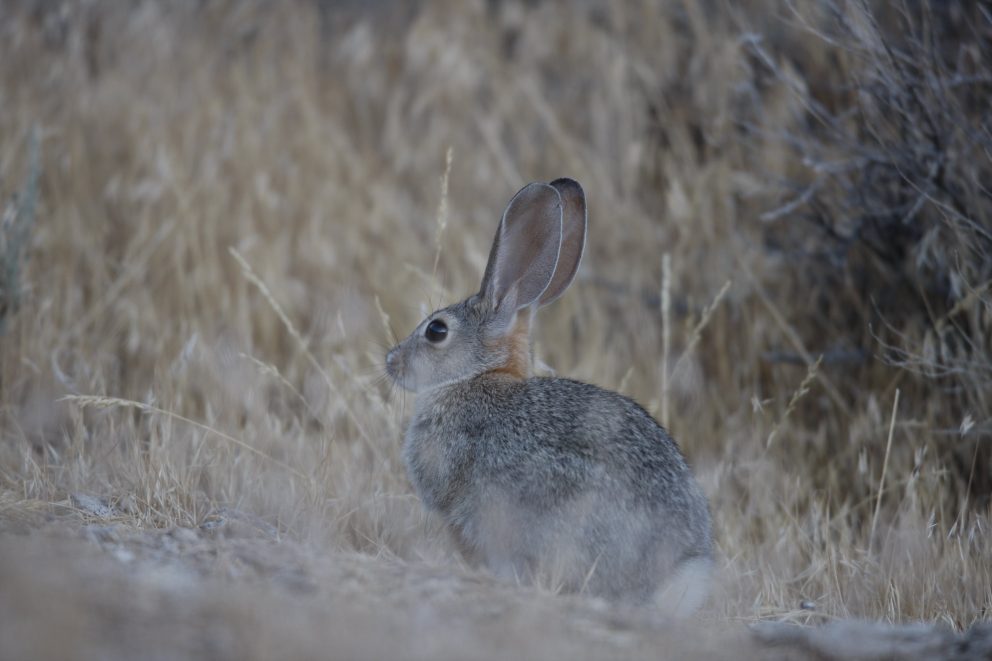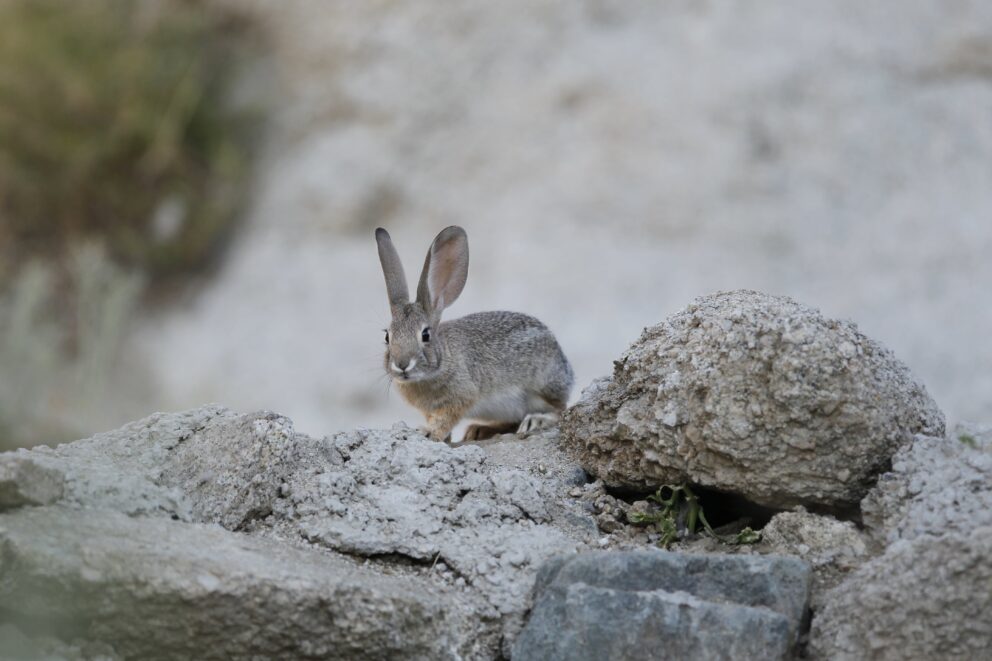- SCIENTIFIC NAME
- Sylvilagus audubonii
- CLASSIFICATION
- Mammal
- LIFE SPAN
- 1-3 Years
- SIZE
- 14-17” | 1.5-2.6lbs
- STATE CONSERVATION STATUS
-
- State Protected
- FEDERAL CONSERVATION STATUS
- Least Concern
- GAME STATUS
- Game
- GAME TYPE
- Upland Game
- Washoe
- Humboldt
- Pershing
- Churchill
- Mineral
- Lyon
- Douglas
- Carson City
- Storey
- Elko
- Lander
- Eureka
- White Pine
- Esmeralda
- Nye
- Lincoln
- Clark
Habitat & Range
Desert Cottontails live in a wide range of habitats including open upland, sagebrush, grasslands, shrublands, riparian areas, and pinyon-juniper forests. They rarely stray far from their birthplace area.
- Cold desert shrubland and sagebrush
- Developed Landscapes
- Grasslands
Threats
- Habitat Degradation
- Predation
Natural History
Cottontails are herbivores, eating a wide variety of plant material such as grasses, sedges, and leaves. They are active in the early morning, late afternoon and at night, but may be seen at any time of the day. When the weather is hot and during the hottest part of the day, Cottontails may rest in the shade of large shrubs, in burrows or within thickets. In the hot months of summer, they conserve moisture and energy by avoiding activity during the hot, dry daylight hours. They’re bodies are made for the desert with their light-colored fur to minimize the absorption of solar heat and large ears to help radiate body heat into the air.
The usual breeding season for the Desert Cottontail is from April to August. The nest is made out of grass and lined with the Cottontail’s fur that the mother pulls from her belly. She then gives birth to two to four litters of one to five young.
The Desert Cottontail’s predators include hawks, owls, weasels, and foxes. They escape from predators by quickly zig-zagging across a field or creeping away very slowly while staying low to the ground. Often, the Cottontail runs to a protective location like a burrow or thicket. If cornered by a small predator, like a weasel, a Cottontail may “bowl over” the predator and give it a kick with its powerful hind legs. Sometimes, they will freeze when danger lurks and scrunch down to blend into its surroundings or try to slowly sneak away to safety.
Fun Facts














